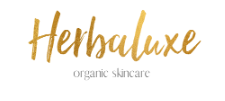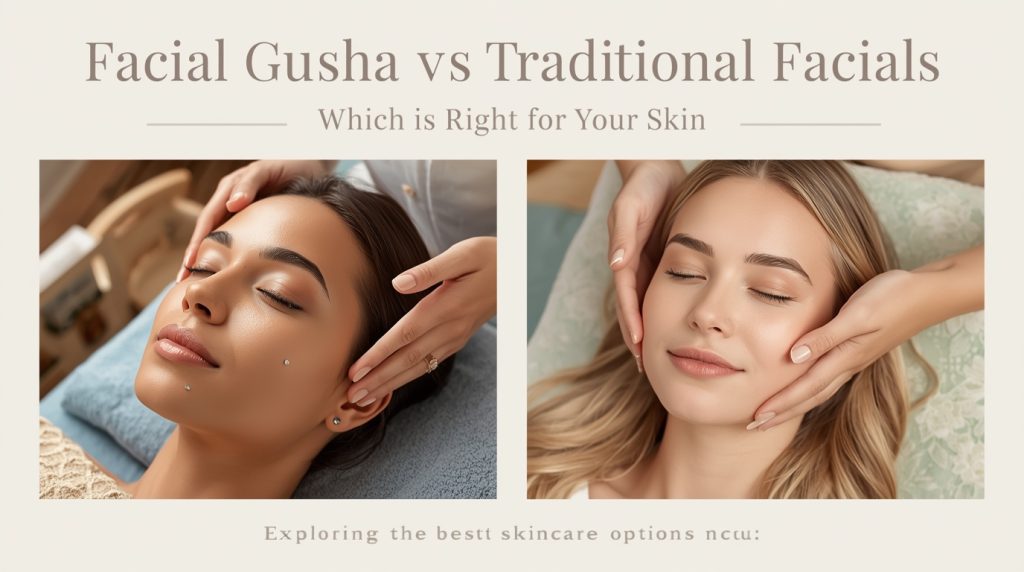Facial gua sha has exploded in popularity over the last few years—and for good reason. This gentle scraping technique from Traditional Chinese Medicine offers a distinct path to circulation, drainage, and sculpting that feels different from a classic Western facial. If you’re in Naples and wondering whether a facial gua sha session or a traditional facial is the best pick, this post breaks it down clearly: what each treatment does, the real gua sha benefits, how they compare, and when to choose one (or both). Consider it your quick guide to Eastern vs. Western facial care—Herbaluxe style.
What is facial gua sha (and why should you care)?
Facial gua sha is an Eastern facial massage technique that uses smooth-edged tools—usually jade, rose quartz, or medical-grade stainless steel—to gently stroke the skin in upward and outward motions. Rooted in TCM (Traditional Chinese Medicine), the practice aims to clear stagnation, improve microcirculation, and encourage lymphatic flow. At a practical level, clients notice reduced puffiness, improved skin tone, and a lifted appearance.
Why it matters: unlike many Western treatments that focus on exfoliation, extractions, or topical penetration, facial gua sha works primarily through mechanical stimulation—moving fluid, encouraging circulation, and re-patterning muscle tension.
What a traditional Western facial usually includes
A typical Western facial—what many local competitors offer—focuses on a series of standardized steps designed to clean, exfoliate, treat, and hydrate. Common elements:
- Double cleanse and skin analysis
- Exfoliation (mechanical or chemical)
- Steam + extractions (if needed)
- Targeted mask or serum application
- Facial massage focused on relaxation and product absorption
- LED, peels, or microdermabrasion in advanced treatments
Western facials emphasize surface-level improvements (texture, congestion, pigment) and immediate cosmetic refreshment. They’re excellent for active acne management, deep exfoliation, or intensive resurfacing.
Side-by-side: How they differ (quick comparison)
- Primary mechanism
- Gua sha: mechanical stimulation of circulation, lymphatic drainage, and muscle tension release.
- Traditional facial: topical treatments, exfoliation, and sometimes device-assisted therapies.
- Best for
- Gua sha: puffiness, fluid retention, facial tension (TMJ/jaw pain), mild sculpting, glow.
- Traditional facial: acne, clogged pores, pigmentation, intensive resurfacing.
- Sensation & experience
- Gua sha: light scraping, rhythmic strokes, can feel energizing.
- Traditional facial: steam, masks, massage and sometimes stronger sensations during peels or microderm.
- Downtime
- Gua sha: virtually none (possible temporary redness).
- Traditional facial: variable—peels and aggressive exfoliation can cause several days of recovery.
The research-backed gua sha benefits (what you can expect)
While modern studies are still growing, clinical and anecdotal evidence points to several repeatable outcomes:
- Improved microcirculation: increases blood flow, helping skin look brighter and healthier.
- Lymphatic drainage: reduces fluid buildup and puffiness, especially around the eyes and jaw.
- Muscle tension release: directly addresses tightness in the masseter and facial muscles—excellent for TMJ relief.
- Subtle sculpting & lift: smoothing and contouring over time by reducing tissue congestion and rebalancing muscles.
- Enhanced product absorption: because circulation improves, serums and oils penetrate more effectively.
All of those make gua sha benefits both immediate (de-puffing, glow) and cumulative (improved tone, less tension).
Step-by-step: What a facial gua sha session looks like at Herbaluxe
- Consult & skin analysis — we check concerns, contraindications, and goals.
- Gentle cleansing — remove makeup and surface oils without stripping.
- Hydrating oil/serum — provides slip so the tool glides safely.
- Targeted gua sha strokes — neck first (to open drainage), then jaw, cheeks, under-eye, and forehead. Each stroke follows lymph pathways and works from center out.
- Intra-session muscle work — light modulation of tense areas (masseter, temporalis) to release deeply held tension.
- Finishing ritual — cooling mask or serum and facial mist for calm, plus aftercare advice.
A full session typically runs 45–75 minutes depending on whether it’s combined with other modalities.
Which should you choose? Decision guide
- Choose facial gua sha if you:
- Want quick de-puffing and a natural sculpted look.
- Have facial tension, jaw pain, or TMJ-related discomfort.
- Prefer gentle, non-invasive treatments with minimal downtime.
- Are interested in Eastern facial massage Naples experts like Herbaluxe.
- Choose a traditional facial if you:
- Need deep exfoliation, extractions, or acne-specific care.
- Want targeted treatments for pigmentation or texture (peels, medical devices).
- Don’t mind occasional downtime for more dramatic surface results.
- Best option: combine them. Many clients rotate or layer modalities—book a treatment series that blends a traditional facial’s corrective power with regular gua sha sessions for maintenance and sculpting.
How gua sha complements organic skincare
Because facial gua sha enhances circulation and lymph flow, it acts as a multiplier for organic actives. Plant-powered serums (vitamin C, hydrating hyaluronic blends, antioxidant-rich oils) absorb more effectively when tissues are oxygenated and drained. Herbaluxe’s philosophy—massage-focused, organic protocols—means we intentionally pair gua sha with clean formulations to both soothe and supercharge results.
Safety, contraindications & aftercare
- Avoid gua sha over active infections, open sores, severe rosacea flares, or immediately after aggressive laser/peel procedures unless cleared by your practitioner.
- Expect light, temporary redness; bruising is uncommon with proper technique.
- Drink water, avoid heavy salt or alcohol post-treatment for best drainage.
- Book regularly (weekly to monthly) depending on goals—cumulative sessions give the best sculpting results.
Final thoughts
Facial gua sha and traditional facials aren’t rivals so much as complementary tools in a thoughtful skincare toolkit. Gua sha delivers natural contouring, drainage, and tension relief—perfect for clients seeking an Eastern approach to beauty. Traditional facials remain indispensable for targeted corrective work like acne control, resurfacing, and deep exfoliation.
If you’re in Naples and curious to try an Eastern facial massage, Herbaluxe specializes in integrating gua sha into organic, massage-led protocols for long-term skin health—book a consult and we’ll recommend the best pathway for your skin type and goals.

